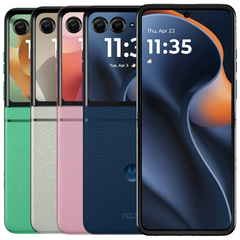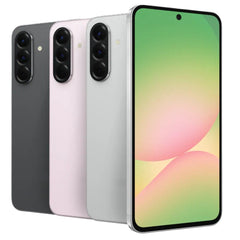Find Devices That Fit Your Needs

Global Connectivity Unleashed: Navigating Your Unlocked Phone in Foreign Lands
Welcome to the ultimate guide for travelers seeking seamless global connectivity! In this comprehensive yet easy to understand exploration, we dive deep into the nuances of using unlocked smartphones abroad. Whether you're a seasoned globetrotter or planning your first international trip, understanding how to leverage your unlocked phone can transform your travel experience. Let's embark on this digital journey with Cellmigo, your trusted companion in global connectivity!
Understanding Your Phone's Unlock Status
An unlocked phone provides the freedom to choose any carrier's SIM card, a crucial feature for international travelers. Here's how you can verify if your device is unlocked:
- Insert a Different Carrier’s SIM Card: Begin by switching off your device. Insert a SIM card from a different carrier (T-Mobile, AT&T, Verizon, etc.) and turn your phone back on.
- Check for Signal: If your phone shows a signal and lets you make a call or send a text, it’s likely unlocked. However, not all networks are compatible with all phones, especially with Verizon in some cases.
- Carrier Compatibility: Visit our detailed guide on carrier compatibility for more insights here.
- Contact Your Carrier: When in doubt, reaching out to your current carrier can provide a definitive answer on your phone's unlock status.
Maximizing the Advantages of Dual SIM Phones
Dual SIM phones offer unparalleled flexibility for international travelers. Here's why they are a game-changer:
- Two Numbers, One Device: Carry a local number for everyday use and your home number for emergencies or important contacts (Roaming Charges may Apply).
- Save on Roaming Fees: Using a local SIM for calls and data can significantly reduce costs compared to international roaming fees.
- Seamless Switching: Easily switch between SIMs for various services like calls, texts, and data, depending on your needs.
- Travel-Friendly: Perfect for those who frequently travel or stay abroad for extended periods.
Navigating the Pitfalls of Home Carrier Usage Overseas
While using your home carrier abroad might seem convenient, it comes with several drawbacks. Let's explore these challenges and their solutions:
- High Roaming Charges: One of the most significant disadvantages is the potentially exorbitant costs associated with international roaming for calls, texts, and data.
- Limited Network Coverage: You might face issues like slow internet speeds or even no signal in certain areas, depending on your home carrier's international agreements.
- Opting for Local SIMs: To avoid these problems, purchasing a local SIM card upon arrival in your destination country is a more cost-effective and reliable solution.
Combining the Best of Both Worlds: Home and Local Numbers
Maintaining both your original phone number and a local number while traveling can offer the best balance of convenience and cost-effectiveness. Here's how:
- Maintaining Your Home Number: Keep your original number active for receiving urgent calls or messages from home.
- Utilizing a Local Number: A local SIM for everyday calls, texts, and data usage can help you avoid hefty roaming charges.
- App-Based Communication: With data from a local carrier, you can use communication apps like WhatsApp, Skype, or WeChat for international calls and texts without additional costs.
Exploring Advanced Connectivity Options in New iPhones
New iPhone models have embraced the future of telecommunication with eSIM and Dual SIM capabilities. Here's what you need to know:
- Understanding eSIM: An eSIM (embedded SIM) is a digital SIM that allows you to activate a cellular plan from your carrier without the need for a physical nano-SIM.
- Activating eSIM on iPhone: To add an eSIM, go to Settings > Cellular > Add Cellular Plan. Scan the QR code provided by your local carrier to activate the new plan.
- Dual SIM Benefits: Having both an eSIM and a physical SIM in your iPhone means you can have two different cellular plans from one device – ideal for traveling.
Getting Started with International Pay-As-You-Go SIM Cards
Activating a pay-as-you-go SIM card in a foreign country is a straightforward process. Follow these steps to get connected:
- Researching Local Carriers: Before your trip, research the best pay-as-you-go plans available in your destination country.
- Providing Necessary Information: You will likely need to provide personal identification and your phone's IMEI number for activation.
- Choosing the Right SIM: Depending on your phone’s capabilities, you can opt for a physical SIM card or an eSIM.
Customizing Your Android for Dual SIM Functionality
Android phones offer versatile options for dual SIM usage. Here's how to set up and optimize your device:
- Accessing SIM Card Settings: Go to Settings > Network & Internet > SIM cards to access your SIM card settings.
- Default SIM Selection: Choose your default SIM for calls, texts, and data, and customize according to your travel needs.
- Managing Data Usage: Keep an eye on your data usage to avoid unexpected charges, especially when switching between SIMs.
Mastering iPhone’s Dual SIM Capabilities
Configuring your iPhone to use data and calls from a second SIM or eSIM is simple. Follow these steps for a seamless experience:
- Navigating to Cellular Settings: In Settings, go to Cellular to manage your SIM cards and cellular plans.
- Line Selection: Choose which line (primary or secondary) you want to use for different functions like calls, texts, and data.
- Controlling Data Roaming: Ensure that data roaming is disabled for your primary line to avoid unexpected charges.















































